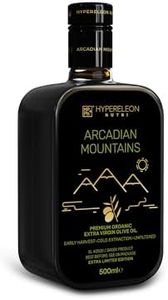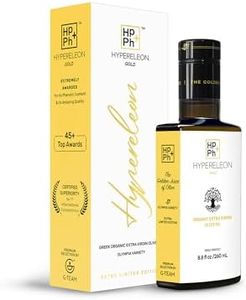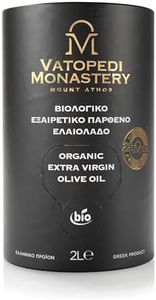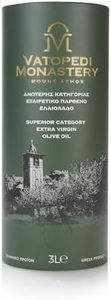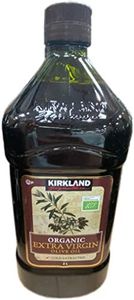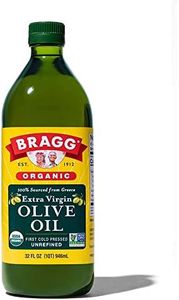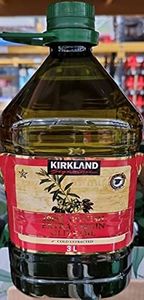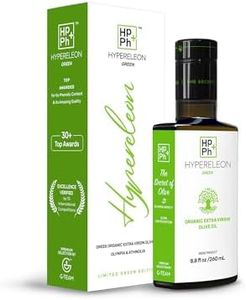We Use CookiesWe use cookies to enhance the security, performance,
functionality and for analytical and promotional activities. By continuing to browse this site you
are agreeing to our privacy policy
10 Best Organic Olive Oils
From leading brands and best sellers available on the web.Buying Guide for the Best Organic Olive Oils
Choosing the right organic olive oil can feel overwhelming with so many options on the shelves. Olive oil is a staple in many kitchens, valued for both its flavor and its health benefits. When choosing the best fit for you, think about how you plan to use it: for dressings, dipping, cooking, or finishing dishes. Key differences between olive oils have to do with their production process, taste, aroma, and the certification that guarantees their organic status. Learning to read the labels and understanding what makes an olive oil high-quality will help you make the right choice for your table.Type (Extra Virgin, Virgin, Pure)This specification refers to how the olive oil is made and how refined it is. Extra virgin is the least processed and comes from the first pressing of the olives, maintaining the most flavor, nutrients, and aromas, making it ideal for dressings, drizzling, and dipping. Virgin olive oil is also minimally processed but with slightly higher acidity and a milder flavor, suitable for general cooking. Pure or 'regular' olive oil is more refined and might include a blend of virgin and refined oils, resulting in a milder taste and higher smoke point, good for frying. If you want the highest quality and full health benefits, extra virgin is the best, especially if you use it raw or gently cook with it. Choose based on how you like to use olive oil most often.
Origin (Single-Origin vs. Blend)This tells you where the olives were grown and harvested. Single-origin oils come from olives grown in one specific region or even a single farm, often resulting in distinctive flavors and better traceability. Blends are made from olives sourced from different places, which can produce a more balanced but less unique oil. If you enjoy exploring flavors or want to support specific regions, single-origin might be best. For consistent taste and wider availability, blends are a reliable choice.
Harvest Date and FreshnessThis is the date when the olives were picked and pressed into oil. Olive oil is best when fresh, as its flavor and healthy properties diminish over time. Harvest dates help you judge freshness—look for the most recent season's oil for the best quality. If you use olive oil slowly or for special occasions, freshness is especially important, so prioritize a recent harvest.
Organic CertificationThis label guarantees that the olives were grown without synthetic chemicals, pesticides, or fertilizers, and processed according to organic farming standards. Certification usually comes from reputable bodies. Always look for a trustworthy organic seal on the bottle since that's your assurance the oil meets strict organic rules. If you care about environmentally friendly practices or have sensitivities to chemicals, this is vital.
Flavor ProfileOlive oils can range from mild and buttery to robust and peppery, and this is influenced by the olive type, ripeness, and region. Some oils taste grassy, fruity, or slightly bitter. Experiment with small bottles or tasting samplers to find an olive oil that fits your preference and use. For drizzling and salads, a more robust oil might enhance flavor, but for baking or subtle dishes, a mild oil could be better.
Packaging (Dark Glass or Tin)Exposure to light, heat, and air can quickly ruin olive oil. That's why packaging matters—a dark glass bottle or tin protects the oil from sunlight and helps it last longer. Avoid clear bottles if possible. If you tend to keep your olive oil on the counter for easy access, prioritize packaging that blocks light to keep your oil at its best.
